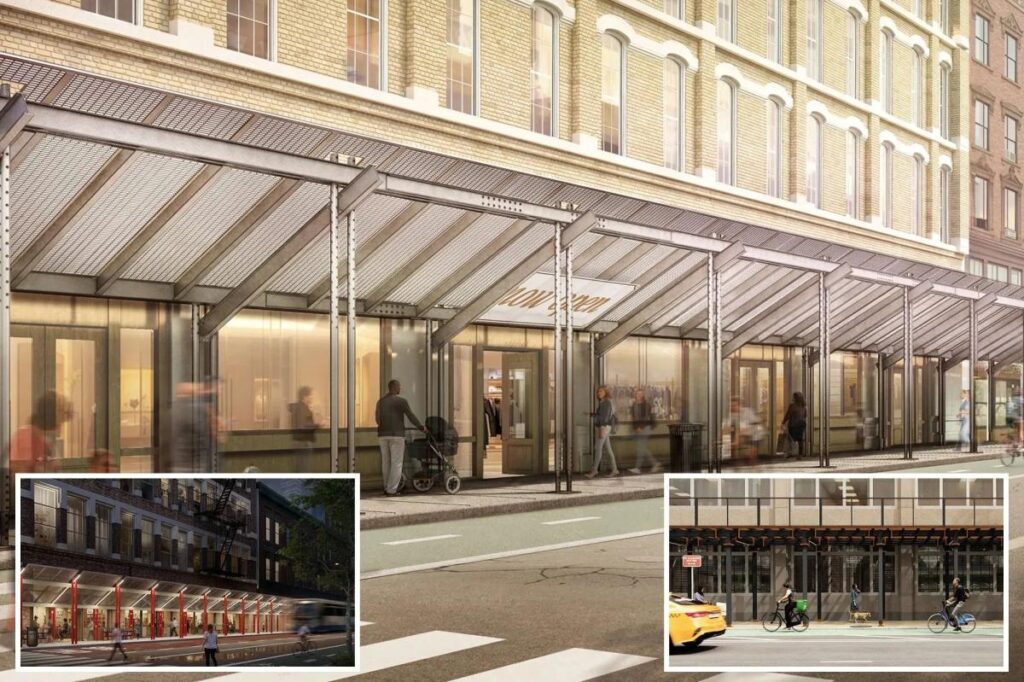Sleek new designs for future city sidewalk sheds were unveiled by Mayor Eric Adams on Tuesday — and the improved versions are so drastic, you may not be able to tell they’re temporary structures.
The modern replacements will sub out Gotham’s long-despised dingy sidewalk scaffolding to hopefully enhance city street aesthetics while also boosting pedestrian safety, proponents said.
“Today marks a major step forward in our mission to reimagine New York City’s streetscape,” Adams said in a statement.
“For too long, outdated and cumbersome sidewalk sheds have blocked sunlight, hurt small businesses, and cluttered our neighborhoods,” he said.
The new versions of the sheds, crafted by city architecture and design firms Arup and Practice for Architecture and Urbanism, will be used at construction projects and buildings undergoing facade work as early as next year.
PAU’s so-called “Baseline Shed” involves a transparent roof angled upward to let light onto the sidewalk.
The firm’s lightweight “Speed Shed,” for short-term work including emergency repairs, has a similar angled roof with netting.
The firm’s third design, the “Wide Baseline Shed,” is a heavy-duty model for wide sidewalks and major thoroughfares and features columns spaced far apart.
Arup’s models include the light-duty, balcony-inspired “Air Shed” completely lifted off the ground and anchored into a building for facade repair and window-replacement projects.
The firm’s the lightweight “Flex Shed” can be modified around street signs, bus stop shelters and unique building structures.
Its “Rigid Shed” will meanwhile be used for heavy-duty, major repair work that involves tower cranes and high-rise construction.
The two firms were hired in February 2024 to develop the “innovative designs” and improve the current shed model — which is a frequent “source of frequent public complaints,” City Hall said.
Sidewalk sheds are mandated under the city’s building code and erected to protect pedestrians from potential falling debris near building repair and construction sites — but the green blights have also posed public safety and crime concerns.
The development comes as the latest installment of the mayor’s years-long Get Sheds Down Initiative, which has brought down more than 400 long-standing sheds since July 2023 — including ones on city streets for nearly two decades.
Through a joint study last year with Mastercard, the Adams administration found that sidewalk sheds can cost Manhattan businesses $3,900 to $9,500 in consumer spending each month.
Registered design professionals will be able to get permits to use the new shed plans through the same permitting process employed for the old hunter green pipe-and-plywood eyesores.
Read the full article here














